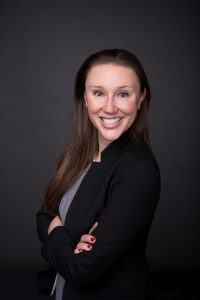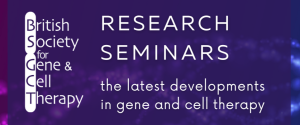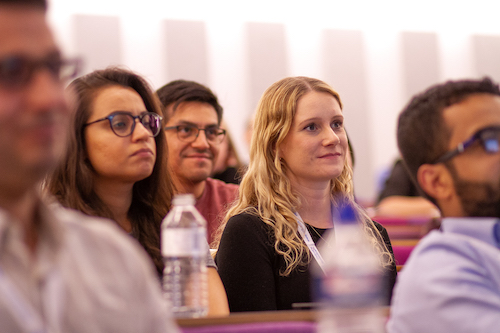Dear Member, We are pleased to announce that voting is now open to elect two…

BSGCT Newsletter March 2022
The latest news and updates from the BSGCT
Dear %FirstName%,
We are looking forward to welcoming Prof. Laurent Servais to our next Research Seminar, which takes place on 27th April. More details will be announced very soon.
We would also like to remind you that if you missed our latest ECR Seminar earlier this month, you can watch the recording now on our website.
Kind regards,
The BSGCT Board.
PREVIOUS EVENT
ECR Seminar Series
This month we were joined by Dr Anji Miller who discussed the growing career options available and the less well-known Technology Transfer profession. If you missed her seminar, you can catch it now on our YouTube Channel.
NEXT EVENT
Research Seminar with Prof. Laurent Servais
Prof. Laurent Servais, University of Oxford, joins us on Wednesday 27th April, 12:00-13:00 BST, to discuss his research.
More details and free registration will be available soon on our website.
Public and Patient Engagement Seminar with Dr. Nicole Paulk
Our next Public and Patient Engagement Seminar takes place on Wednesday 25th May, 18:30 BST. Dr Nicole Paulk, University of California, San Francisco, discusses “What’s Possible with AAV Gene Therapy for Rare Disease” followed by an “Ask me Anything”

See our website for more details.
RESEARCHER SPOTLIGHT
This month’s ‘researcher in the spotlight’ is Professor Rafael Yáñez-Muñoz, Royal Holloway, University of London and BSGCT President.
Can you tell us about yourself and your research?
I am an academic and the director of the Centre of Gene and Cell Therapy. Born and educated in Spain, I came to the UK in 1995. After appointments with MRC, University College London, Queen Mary’s and King’s College London, I joined Royal Holloway in 2007. In the Department of Biological Sciences I lecture on genetics and inherited (“rare”) diseases, and the use of genetic and stem cell technologies to develop treatments for rare and common diseases. I am currently the president of the British Society for Gene and Cell Therapy.
What are your main research interests?
My laboratory is focused on the development of safe and effective genetic and stem cell treatments. This is a very exciting research field because in the last few years several gene and stem cell therapies have finally been approved for marketing, with many more in the pipeline. Over the years we have worked on a range of rare and common diseases, including Parkinson’s, spinal injuries and defects of the immune system; currently our focus is on two rare diseases, ataxia telangiectasia and spinal muscular atrophy.
Can you tell us about the Rare Disease Day you organised & hosted last month (28th February) at Royal Holloway University of London?
Rare Disease Day is an international awareness day celebrated in over 100 countries on the last day of February each year (because this is a rare day in a leap year). Each rare disease affects relatively few people, but as there are over 9,000 rare diseases, all together they affect 7% of people at some stage in their lives: this is 3.5 million people in the UK, and 300 million people in the world. Many of these diseases affect children and are very severe, their diagnosis is often lengthy and complicated, and for most there are no effective treatments. For all these reasons it is very important to support people affected and improve their care, and to research their diseases and how to treat them. This is one of our research strengths, and Royal Holloway has been a committed supporter of Rare Disease Day for over a decade.
The last two years we have switched to a virtual event to overcome the COVID-19 pandemic restrictions. This year we also participated in the Global Chain of Lights: the North façade of Founders building was illuminated in the colours of Rare Disease Day in the evening of 28th February.

What are your thoughts on the development of gene therapies and its challenges? Research in this area is evolving quickly, with new technologies like CRISPR genome editing, which we use for ataxia telangiectasia, becoming increasingly important. However, there are a number of challenges to be overcome for gene and cell therapy drugs to have maximum impact. Some involve training the workforce that is needed to develop and manufacture these therapies, with which we are helping as an educational establishment with strong expertise in the area. A major issue is the price of these therapies, which include the most expensive drugs ever (£1,000,000+). New pricing and reimbursement models must be developed to ensure that National Health Services like the NHS can provide widespread access to these drugs for affected people.
What do you like to do when you aren’t researching?
I have always enjoyed sports and try to keep reasonably fit. I go to the gym regularly and like walking and riding my bicycle. Before the pandemic, I took part in a few sponsored rides to support some of the charities that fund our work, like Action for A-T and Spinal Muscular Atrophy UK, which was very rewarding and I look forward to doing again as we return to normality.




